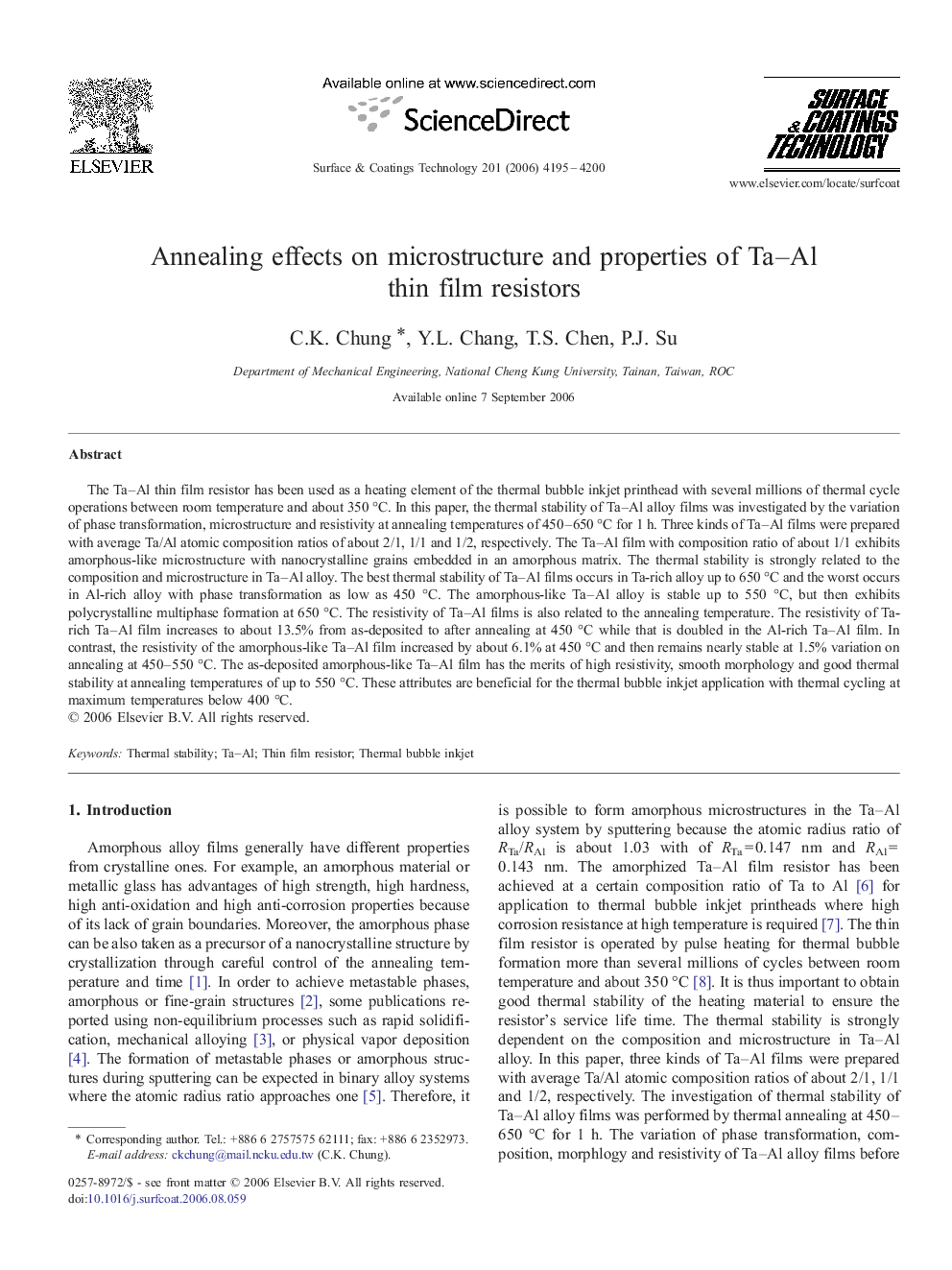| Article ID | Journal | Published Year | Pages | File Type |
|---|---|---|---|---|
| 1663234 | Surface and Coatings Technology | 2006 | 6 Pages |
The Ta–Al thin film resistor has been used as a heating element of the thermal bubble inkjet printhead with several millions of thermal cycle operations between room temperature and about 350 °C. In this paper, the thermal stability of Ta–Al alloy films was investigated by the variation of phase transformation, microstructure and resistivity at annealing temperatures of 450–650 °C for 1 h. Three kinds of Ta–Al films were prepared with average Ta/Al atomic composition ratios of about 2/1, 1/1 and 1/2, respectively. The Ta–Al film with composition ratio of about 1/1 exhibits amorphous-like microstructure with nanocrystalline grains embedded in an amorphous matrix. The thermal stability is strongly related to the composition and microstructure in Ta–Al alloy. The best thermal stability of Ta–Al films occurs in Ta-rich alloy up to 650 °C and the worst occurs in Al-rich alloy with phase transformation as low as 450 °C. The amorphous-like Ta–Al alloy is stable up to 550 °C, but then exhibits polycrystalline multiphase formation at 650 °C. The resistivity of Ta–Al films is also related to the annealing temperature. The resistivity of Ta-rich Ta–Al film increases to about 13.5% from as-deposited to after annealing at 450 °C while that is doubled in the Al-rich Ta–Al film. In contrast, the resistivity of the amorphous-like Ta–Al film increased by about 6.1% at 450 °C and then remains nearly stable at 1.5% variation on annealing at 450–550 °C. The as-deposited amorphous-like Ta–Al film has the merits of high resistivity, smooth morphology and good thermal stability at annealing temperatures of up to 550 °C. These attributes are beneficial for the thermal bubble inkjet application with thermal cycling at maximum temperatures below 400 °C.
